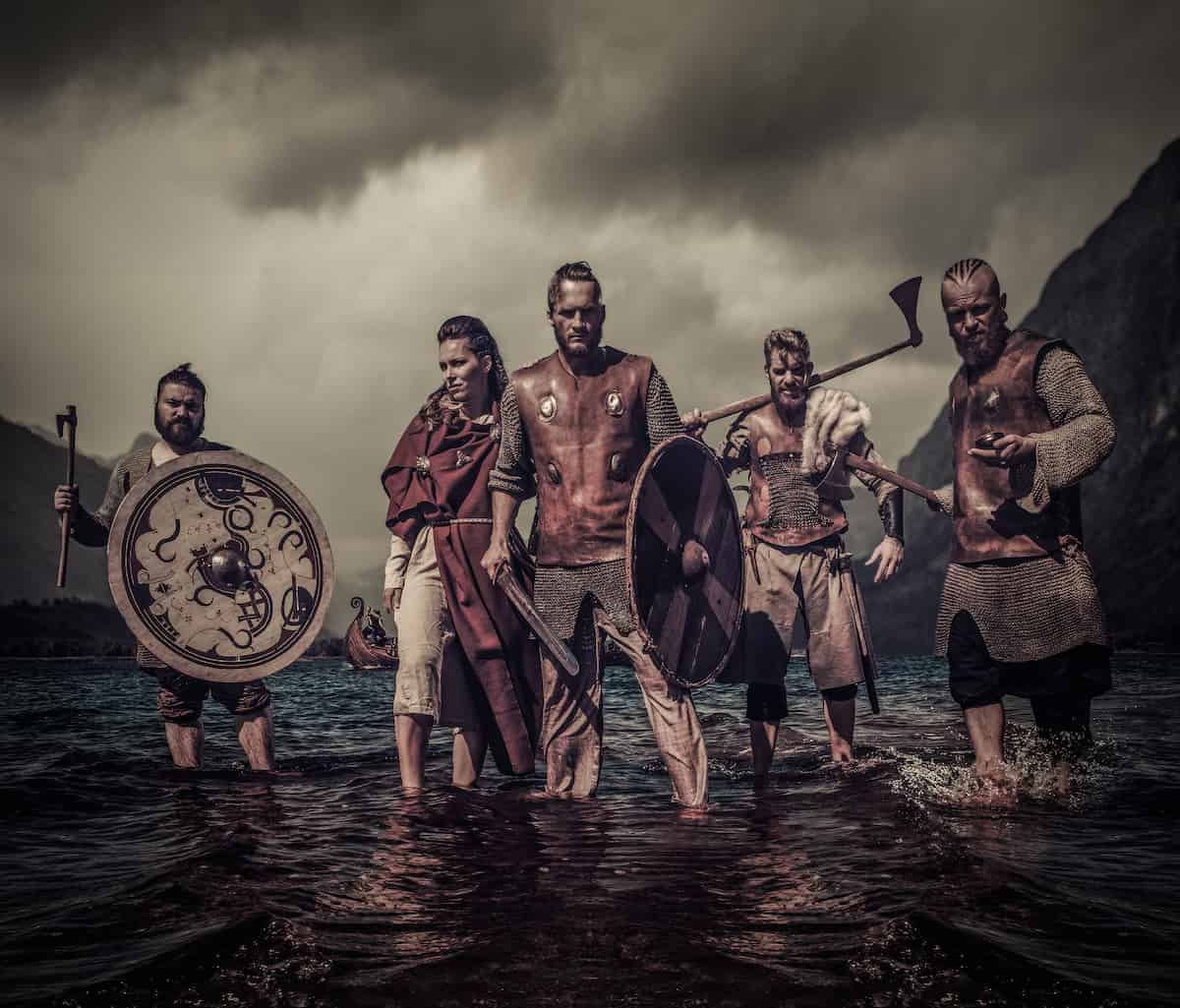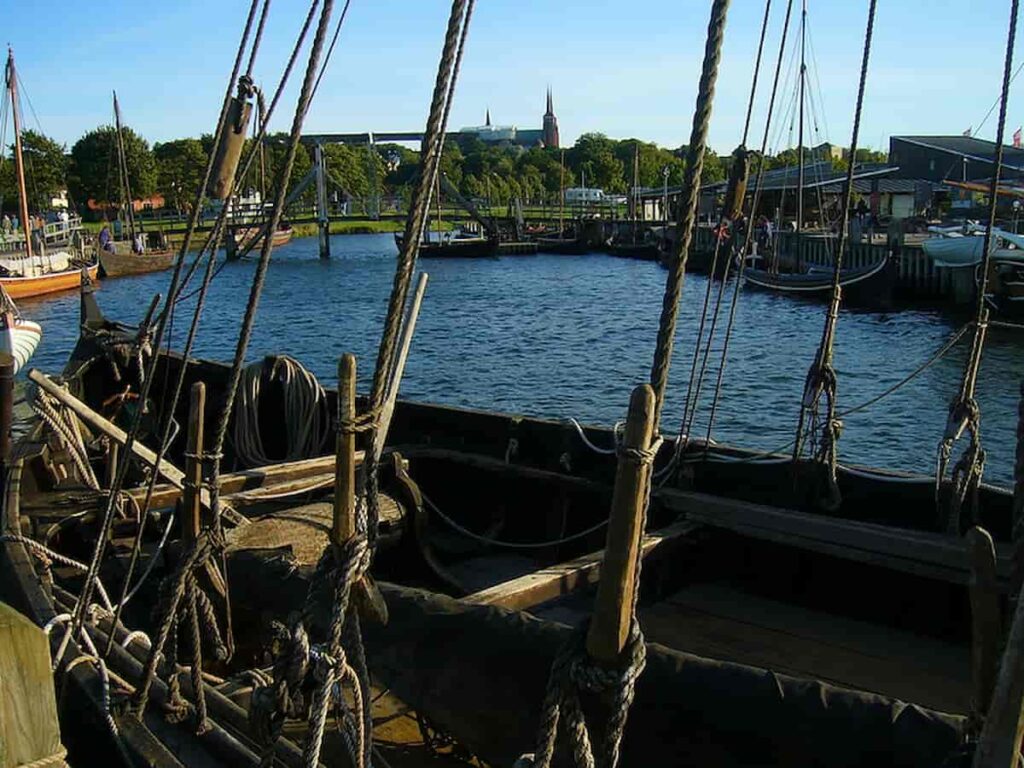The Vikings were a seafaring people from the late 8th to the late 11th century who left their mark on Europe, Asia, and North America. They were known for their extensive travels, raids, and trade, as well as their unique culture, art, and mythology.
But where did the Vikings come from, and what led them to become such a formidable force in history?
In brief, the Vikings originated from the region that is now modern-day Denmark, Norway, and Sweden, which collectively are known as Scandinavia. The term “Viking” was used to describe the seafaring warriors who raided, traded, and settled in other parts of Europe, as well as the farmers, craftsmen, and traders who lived in Scandinavia during the Viking Age.
That said, the Vikings were not a homogeneous group, but rather a collection of different tribes, clans, and kingdoms who shared a common language, religion, and culture.
The origins of the Vikings are complex and multifaceted, and there is still much debate among scholars about the factors that led to their emergence and expansion. Some of the key factors that are often cited include overpopulation, political instability, technological advances, and a desire for wealth, power, and adventure.
However, it is clear that the Vikings were not simply a product of their environment, but rather a dynamic and creative people who were able to adapt and innovate in response to changing circumstances.

Table of Contents
Where did the Vikings originally come from?
The Vikings were seafaring people who originated from Scandinavia. But where did they come from before that? What was the geographical location of Scandinavia in relation to the rest of the world? And what societies existed before the Viking era? Let’s take a closer look.
Where did the Vikings come from before Scandinavia?
The Vikings were not the first people to inhabit Scandinavia. The area was inhabited by various indigenous peoples, including the Sami people, who still live in the northern parts of Scandinavia today. However, the Vikings were not descended from these groups. Instead, they came from various Germanic tribes that migrated to Scandinavia around 2,000 years ago.
Related: Did German Vikings Exist? (The Historical Truth)
Geographical Location
Scandinavia is a region in Northern Europe that includes the countries of Norway, Sweden, and Denmark. It is located to the north of Germany and to the east of the British Isles.
The region is characterized by its cold climate, rugged terrain, and long coastline, which made it ideal for seafaring activities.
Pre-Viking Era Societies
Before the Viking era, Scandinavia was home to several different societies. These included the Germanic tribes that migrated to the region, as well as the Saami people and the Finno-Ugric peoples who lived in the northern parts of Scandinavia.
The societies in Scandinavia were largely agrarian, with people living in small villages and farming the land. However, there were also some larger settlements, such as the trading center of Birka in Sweden.
Overall, the origins of the Vikings are complex and multifaceted. While they originated from Germanic tribes that migrated to Scandinavia, they were also influenced by the societies that existed in the region before them.
Understanding these origins is key to understanding the Viking era and the impact that this seafaring people had on the world.

Viking Expansion
Raids and Conquests
The Viking expansion was a historical movement that led Norse explorers, traders, and warriors, known as Vikings, to sail most of the North Atlantic, reaching as far south as North Africa and as far east as Russia. The Vikings were known for their raiding and conquests, and they acted as looters, traders, colonists, and mercenaries.
The Vikings gained control of the Northern Isles of Scotland (Shetland and the Orkneys), the Hebrides, and much of mainland Scotland. They founded Ireland’s first trading towns, Dublin, Waterford, and others. They also raided and conquered parts of England, France, and Spain.
Why did Vikings come to Scandinavia?
The Vikings originated from the Scandinavian countries of Denmark, Norway, and Sweden. The Vikings came to Scandinavia in search of new land, resources, and opportunities. The harsh climate and limited resources in Scandinavia made it difficult for the Vikings to survive, so they turned to raiding and trading as a means of survival.
You may also be interested in: 9 Most Famous Swedish Vikings in History
Where did the Danish Vikings come from?
The Danish Vikings came from the Jutland peninsula in Denmark. They were known for their seafaring skills and their raids on England and France. The Danish Vikings also established a trading network that extended throughout the Baltic region and into Russia.
Where did the Vikings in Britain come from?
The Vikings in Britain came from different parts of Scandinavia. The Vikings who came from Denmark, were the most numerous and established a significant presence in England. However, the vikings who came from Norway, also established quite a presence in Scotland and Ireland.
On the other hand, the Vikings based in Sweden tended to establish more of a presence in Russia and the Baltic region.
